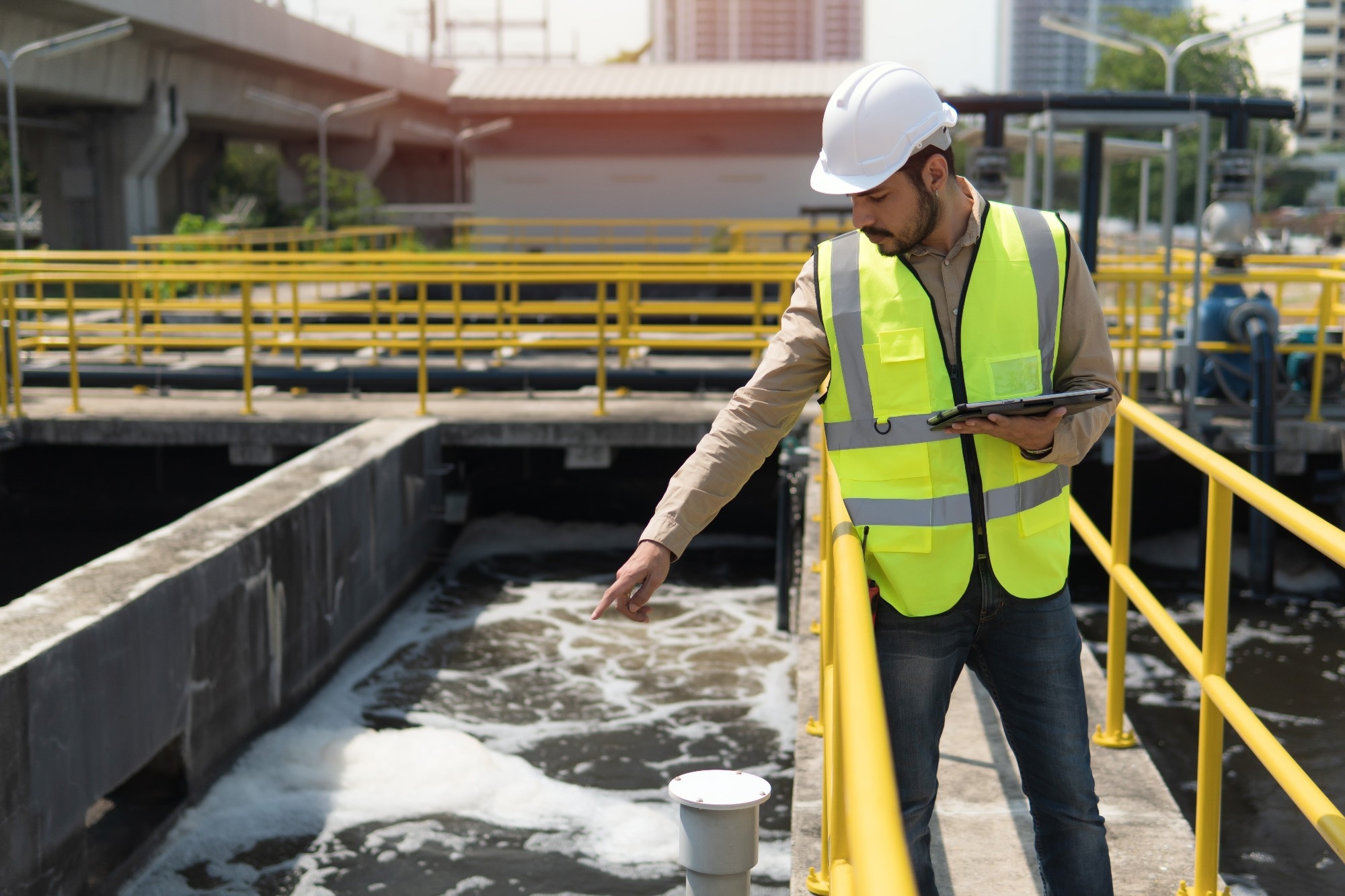Plastic waste has become a major environmental issue, introducing microplastic particles into various ecosystems. Wastewater treatment plants (WWTPs) process substantial amounts of microplastics, which can serve as surfaces for microbial colonization, forming "plastispheres" that could harbor and spread potentially harmful bacteria.
In a recent study published in PLOS ONE, Norwegian researchers investigated the microbial communities in plastispheres formed within WWTPs, specifically focusing on the presence of foodborne pathogens.
By examining plastic-associated biofilms in raw and treated wastewater through cultivation and molecular methods, they aimed to understand the potential role of plastispheres in the transmission of pathogens, as well as the associated environmental and public health concerns.
 Study: Wastewater-associated plastispheres: A hidden habitat for microbial pathogens? Image Credit: Viewfoto studio/Shutterstock.com
Study: Wastewater-associated plastispheres: A hidden habitat for microbial pathogens? Image Credit: Viewfoto studio/Shutterstock.com
Background
Plastics, which have become extremely popular in all spheres of life due to their durability and low cost, have become ubiquitous but problematic pollutants. With millions of tons of plastic entering waste streams annually, microplastic fragments are emerging as widespread contaminants.
These microplastic particles can harbor toxic chemicals and, due to their small size, evade filtration processes in WWTPs. Consequently, these particles and their associated pollutants persist in natural ecosystems and enter the tissues and organs of living organisms.
Studies have also found that microplastics can act as biofilm substrates for bacteria, forming plastispheres, which could include harmful strains such as Acinetobacter and Klebsiella.
Furthermore, the potential of plastispheres to introduce harmful microbes into soils and water systems through treated effluent or sludge is of increasing concern, especially in regions reliant on treated wastewater for irrigation.
About the Study
In the present study, the researchers explored the composition and diversity of microbial communities on plastispheres within a WWTP setting and aimed to identify the presence of harmful bacteria, such as food-borne pathogens.
The study was conducted at the largest WWTP in Norway, which treats between 100 and 110 million cubic meters of municipal wastewater every year.
Plastic samples made of common polymers such as high-density polyethylene (HDPE), polyvinyl chloride (PVC), and polypropylene (PP) were used to examine biofilm formation in wastewater.
After sterilization, the plastic samples were submerged in two environments within the WWTP — one containing raw, untreated wastewater and the other with treated wastewater.
The researchers then sampled the plastispheres formed on these surfaces after 14 days and 30 days to capture the early and late stages of biofilm development, respectively.
The biofilm material was collected from the plastic surfaces and prepared for deoxyribonucleic acid (DNA) and ribonucleic acid (RNA) analysis using standard extraction kits.
The study used quantitative polymerase chain reaction (qPCR) to identify specific pathogenic bacteria such as Escherichia coli, Listeria monocytogenes, and Campylobacter jejuni, as well as viruses such as adenovirus and norovirus.
The DNA from these samples was used to amplify the 16S ribosomal RNA (rRNA), which was used to characterize bacterial communities, while the RNA was analyzed for viral presence through reverse transcription-qPCR (RT-qPCR).
The researchers then calculated the alpha and beta diversity to compare microbial communities across plastic types, time points, and raw and treated wastewater types. Network analysis identified microbial interactions in these communities, and statistical tests were used to analyze the impact of environmental and temporal factors on bacterial composition.
The study used principal coordinate analysis and alpha-diversity indices to represent the results, which also helped highlight the differences in microbial communities between raw and treated wastewater plastispheres.
Major Findings
The study found that wastewater plastispheres hosted diverse bacterial and viral communities, both of which showed notable differences between raw and treated wastewater environments.
In raw wastewater plastispheres, bacterial richness and evenness were significantly higher than in that found in plastispheres grown in treated samples, which also reflected the more diverse microbial ecosystem seen in raw wastewater.
The wastewater type and exposure duration primarily influenced bacterial diversity. Furthermore, the alpha diversity analysis indicated that plastispheres formed in raw wastewater harbored richer and more heterogeneous microbial communities than those from treated wastewater, with significant richness observed on PP and HDPE microplastic particles at different time points.
Pathogen analysis revealed that E. coli, L. monocytogenes, and adenovirus were detectable in both raw and treated wastewater plastispheres, while C. jejuni was absent from both.
The researchers found the absence of Campylobacter in the wastewater unexpected. Still, they proposed that it could either be due to inadequate sensitivity of the detection methods or due to the presence of other competing bacteria in the plastisphere.
Additionally, the potentially opportunistic Acinetobacter species dominated raw wastewater plastispheres and increased in abundance over time, and Klebsiella pneumoniae was also isolated from both raw and treated samples of wastewater.
Conclusions
Overall, the findings reported that plastispheres within WWTPs support diverse microbial communities, including potential pathogens.
The findings highlighted the need for innovative methods to remove microplastics from wastewater and better wastewater management practices to address plastisphere-associated pathogens and their potential environmental release.
Journal reference:
-
Lund, W. I., Basson, A., Aspholm, M., Wasteson, Y., & Myrmel, M. (2024). Wastewater-associated plastispheres: A hidden habitat for microbial pathogens? PLOS ONE, 19(11), e0312157-. doi:10.1371/journal.pone.0312157. https://journals.plos.org/plosone/article?id=10.1371/journal.pone.0312157